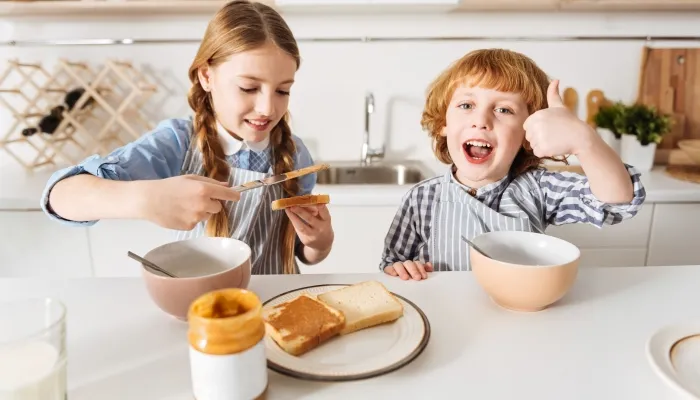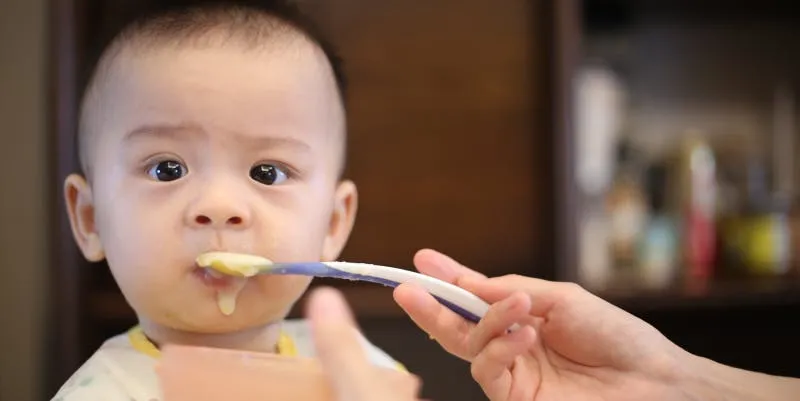
Is Peanut Butter Healthy For Kids? The Surprising Truth
Hey, you. Yes, you with the kids and the peanut butter jars in the pantry. Have you ever wondered whether that peanut butter you slather on sandwiches and apples is actually good for your kiddos? You want the best for your little ones, but with so much conflicting nutrition advice out there, it can be hard to know what's really healthy and what's hype.
Well, wonder no more. We've dug into the latest research on peanuts and peanut butter to uncover the truth. The results may surprise you. While peanuts and peanut butter can absolutely be part of a balanced diet for kids, there are a few things you need to know. Keep reading to find out if peanut butter deserves its place in your children's lunch boxes and snack times, or if it's time to switch to an alternative. The truth may not be quite as straightforward as you think.
The Nutritional Benefits of Peanut Butter
Peanut butter is packed with nutrition for growing kids. Here are some of the main benefits:
Protein Powerhouse
Two tablespoons of peanut butter contain 8 grams of protein, which is great for building and repairing muscle. Kids need protein for growth, and peanut butter is an easy way for them to get it.
Healthy Fats
Peanut butter also contains healthy fats, like monounsaturated fats and omega-6 fatty acids. These fats provide energy and help absorb vitamins A, D, E and K. While fats have gotten a bad rap, certain fats like those in peanut butter are important for kids.
Vitamin E
Peanut butter is high in vitamin E, an important antioxidant that protects cells from damage. Two tablespoons contain about half of a child’s recommended daily amount of vitamin E.
B Vitamins
Peanut butter also contains thiamine, niacin, folate and vitamin B6, all of which help convert food into energy and are important for growth.
Magnesium
Peanut butter is a good source of magnesium, a mineral important for bone health, metabolism and heart health. Two tablespoons contain about 10% of a child’s daily magnesium needs.
Healthy Add-In
Peanut butter is versatile and can be added to many kid-friendly foods like smoothies, oatmeal, yogurt or applesauce. This makes it an easy way to boost nutrition in foods your child already enjoys.
In moderation, peanut butter can absolutely be part of a healthy diet for kids. Look for varieties with no added sugar and oils, and enjoy all the nutritious benefits this creamy spread has to offer.
Potential Downsides of Peanut Butter for Kids
Peanut butter may be delicious, but it does come with some potential downsides for kids.
High in calories
Two tablespoons of peanut butter packs nearly 200 calories. While peanut butter does provide protein and healthy fats, the calories can quickly add up if kids eat more than the recommended serving size. To avoid overeating, stick to just 1-2 tablespoons per snack and look for peanut butters with no added sugar.
Choking hazard
Peanut butter can be a choking risk for small children, especially those under age 4. Due to its sticky, paste-like consistency, it can be difficult for kids to properly chew and swallow peanut butter. Always supervise young kids when eating peanut butter and consider offering peanut butter thinned out with milk or served with soft foods like bananas.
Allergy concerns
Peanut allergies are common in children and can be life-threatening. If your child has a peanut allergy, peanut butter should be avoided altogether. For other kids, be on alert for any signs of an allergic reaction the first time peanut butter is introduced, such as hives, itching, or swelling of the lips, face, tongue and throat or other areas of the body.
While peanut butter does provide nutritional benefits, it needs to be eaten in moderation and with certain precautions, especially for little ones. By being mindful of serving sizes, choking hazards and allergies, peanut butter can absolutely be part of a healthy diet for kids. But as with many nut butters, consume in moderation!
How Much Peanut Butter Should Kids Eat?
How much peanut butter should kids eat? Everything in moderation, as the old saying goes. Peanut butter can absolutely be part of a healthy diet for children, but too much of a good thing is still too much.
Portion control is key
For the average kid, 2 to 3 tablespoons of peanut butter, a few times a week is a good rule of thumb. That’s enough to reap the nutritional benefits, without going overboard. At around 190 calories and 16 grams of fat per 2 tablespoon serving, peanut butter is energy-dense. Gorging on half a jar at once can lead to weight gain and nutritional imbalance.
Instead of letting your child snack straight from the jar, serve peanut butter:
- On whole wheat bread, fruit like apples or celery sticks
- As a dip for pretzels or rice cakes
- Swirled into yogurt or oatmeal
Watch out for extra sugar
Many commercial peanut butters are loaded with added sugar, corn syrup and hydrogenated oils. Choose natural peanut butters with no added sugar and oils. Or better yet, grind your own fresh peanut butter at home. Homemade peanut butter requires just one ingredient—peanuts!
Allergy alert
If your child has a peanut allergy, peanut butter is obviously off the table. Peanut allergies can be life-threatening, so check with your pediatrician before introducing peanuts or peanut products to infants and toddlers.
Nutrition beyond peanut butter
While peanut butter does provide protein, healthy fats and nutrients like niacin and vitamin E, it shouldn’t be a child’s only source of nutrition. For balanced nutrition, also serve:
- Lean meats, eggs, beans and legumes
- Dairy or dairy alternatives
- Fresh fruits and vegetables
- Whole grains
In moderation and as part of a balanced diet, peanut butter can absolutely be a healthy choice for kids. But like most good things, too much peanut butter may do more harm than good. Keep portions in check, choose natural nut butters with no added sugar, and make sure your child eats a variety of other nutritious foods as well.
Choosing the Healthiest Peanut Butter
When choosing peanut butter for your kids, opt for natural peanut butter with no added sugar. The ingredients should just be peanuts and maybe some salt. Avoid peanut butters with extra sugar, hydrogenated oils, or stabilizers. These additives provide no nutritional value and just empty calories.
Look for peanut butters with a simple ingredient list. The less ingredients, the better. Just peanuts and maybe salt should be the only ingredients. Avoid peanut butters with added sugar, hydrogenated oils, or stabilizers like palm oil. These additives are unnecessary and provide no nutritional benefit.
Choose crunchy or smooth based on your kid's preference. Crunchy peanut butter has peanut chunks, while smooth has a creamy consistency. Nutritionally, they are similar. Crunchy may have a slight edge with extra texture.
But either can be part of a balanced diet.
When possible, buy natural peanut butter that requires stirring. The oil may separate, so you have to stir it together. While less convenient, this natural peanut butter has no hydrogenated oils to prevent separation. The natural oils are healthy fats kids need. And stirring is a small price to pay for a more nutritious option.
Compare nutrition labels and choose a peanut butter with at least 3 grams of protein and healthy fats per 2 tablespoon serving. Peanut butter should have no trans fats and minimal saturated fat and sugar. The healthiest options will have the fewest ingredients and no artificial additives.
Peanut butter can absolutely be part of a balanced diet for kids. The key is choosing a natural, additive-free peanut butter without excess sugar, salt or unhealthy fats. When you find a healthy peanut butter, your kids can enjoy it as a snack, in sandwiches, or as an ingredient in treats like peanut butter cookies. Moderation is key, but peanut butter has a lot to offer as an occasional part of their nutrition.
Creative Ways to Include Peanut Butter in Your Kid's Diet
Peanut butter is a kid favorite, but is it actually good for them? The surprising truth is yes, when consumed in moderation and in healthy ways. Here are a few creative ways to add peanut butter to your child’s diet:
Smoothies
Add a tablespoon or two of peanut butter to a fruit smoothie. Bananas pair particularly well with peanut butter. The peanut butter adds protein, healthy fats and a nutty flavor without changing the texture too much.
Yogurt Parfaits
Layer yogurt, granola and peanut butter in a glass for an easy, balanced snack. The salty-sweet combination of peanut butter and yogurt is irresistible. Use low-sugar granola and Greek yogurt for extra nutrition.
Ants on a Log
The classic ‘ants on a log’—celery sticks topped with peanut butter and raisins—makes a fun snack for kids. The celery provides crunch, the peanut butter offers protein and the raisins add a touch of sweetness.
Pancakes and Waffles
Add a few tablespoons of peanut butter to pancake or waffle batter. The peanut butter melts into the batter, infusing each bite with nutty richness. Top the pancakes with more peanut butter, maple syrup and fresh fruit.
Quesadillas
Spread peanut butter on a whole wheat tortilla, top with sliced bananas and a sprinkle of cinnamon. Fold the tortilla in half and cook in a pan with a bit of oil until the outside is lightly browned. The peanut butter will melt, bonding everything together. Cut into wedges and serve.
Peanut butter can absolutely be part of a balanced diet for kids when used creatively and in moderation. These kid-friendly peanut butter recipes add nutrition, protein and taste to your child’s day in a fun, memorable way.
Conclusion
So there you have it. Peanut butter can absolutely be part of a healthy diet for kids. As with many foods, moderation is key. Look for natural peanut butter with no added sugar and make sure your child isn't allergic before giving it to them for the first time. Spread it on whole wheat bread or pair it with pretzels for a perfect snack.
Peanut butter is filled with nutrition like protein, healthy fats, and antioxidants that growing kids need. The next time your child asks for a peanut butter and jelly sandwich, you can feel good knowing you're giving them a snack that's delicious and good for them too. Who knew such a tasty treat could be so nutritious? Now go enjoy a spoonful yourself—you deserve it!


